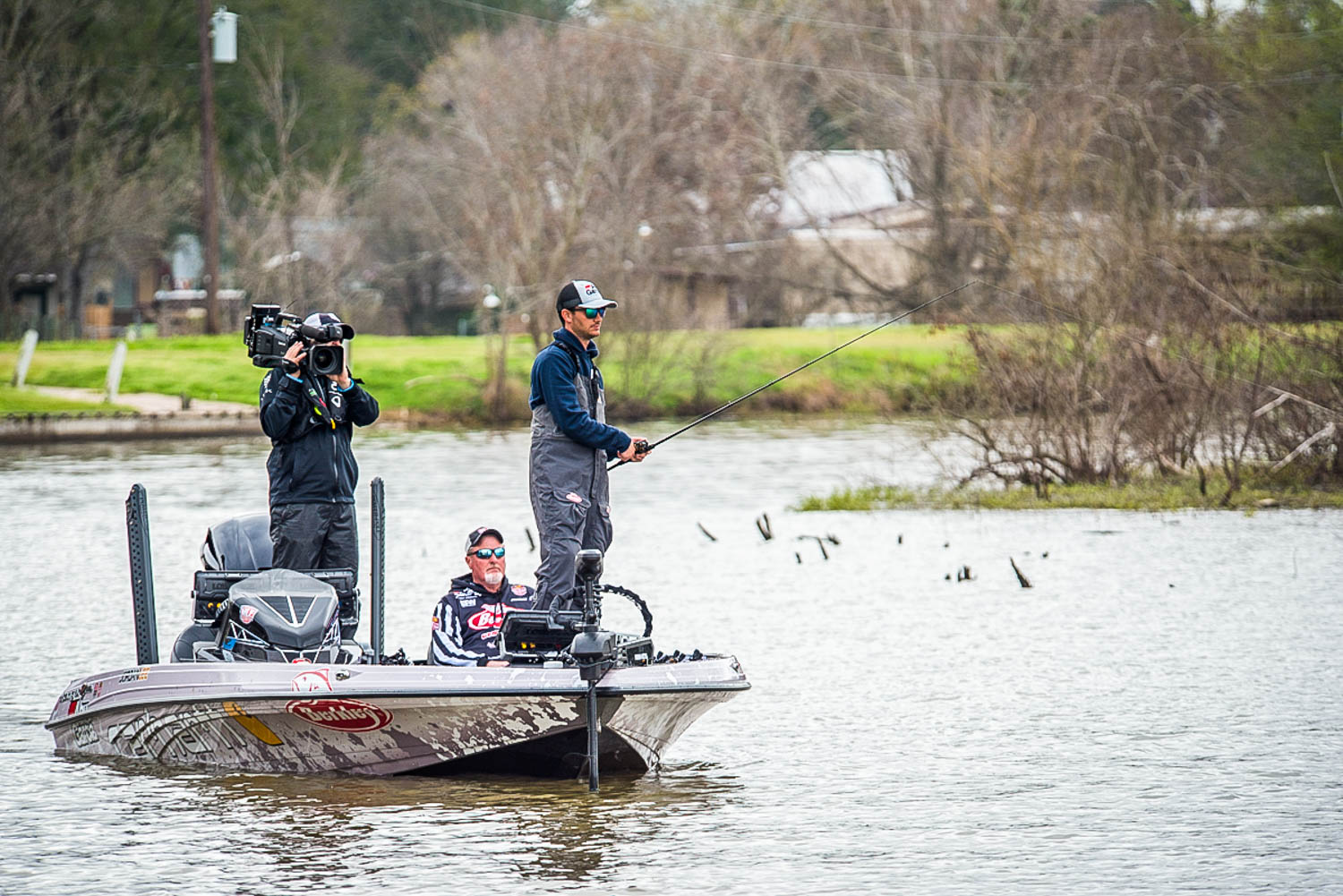Jordan Lee’s Wintertime Grass Attack Plan Will Catch You More Bass

Find the grass, and you’ll find the bass. It’s a pretty straightforward way to catch bass anytime you hit the water, but during the colder months when much of the grass has faded away, it becomes even more vital.
Alabama’s Jordan Lee spends plenty of time fishing the grass-rich bodies of water on the Tennessee River impoundments, and has a specific approach for finding bass during the wintertime.
Know Your Vegetation
All aquatic vegetation is not created equal, and two that Lee finds himself looking for this time of year are eelgrass and hydrilla. Partly due to their abundance near his home and also because of where they typically grow.
“We also have milfoil, but it typically grows much shallower and on top of humps and flats,” Lee says. “This time of year, I am looking for the deeper edges of grass that are in that six to nine-foot range. When the water is cold, I want to be fishing the deepest water I can that still has green grass.”
Finding the grass comes down to using his electronics to locate it, and also knowing where to look.
“I’m always going to start looking close to a creek channel or a ditch,” Lee says. “For all grass, I want to find that defined edge. At the deepest point that it grows, there will be depth where it stops growing, and I’ll keep my boat in that depth zone because that’s where the fish will be.”
Eelgrass
The eelgrass explosion is a relatively new trend on Guntersville and surrounding lakes, but Lee observes that it’s one of the most productive types of vegetation to target when the water is cold.
“It grows deeper, and it also stays thick and green pretty much all year long,” Lee says “It congregates the fish time of year and is the best way to catch numbers of fish.”

Hydrilla
The old standby when it comes to grass fishing is hydrilla, and it’s always part of Lee’s plan, no matter the time of year.
“The biggest thing is to look for the greenest stuff you can find,” he advises. “As it gets colder, it starts to die off and gets lower and lower in the water. The edge is also much more defined than eelgrass, and it can be a lot easier to find.”
Lure Selection
Besides just finding grass, Lee says that water clarity is a big piece of the puzzle when fishing grass in the colder months.
“If the water is ultra-clear, it is pretty much just a jerkbait or Alabama-rig bite,” Lee says. “The problem with jerkbaits around eelgrass is they hang up so much, so I like to upsize my line to keep them from diving as deep.”
Gearing up for Winter Grass
Lee fishes his jerkbaits on a 6-foot-10 medium-heavy Abu Garcia Fantasista Premier rod paired with an 8.0:1 Abu Garcia REVO MGX reel spooled with 12-pound Berkley Trilene 100% Fluorocarbon line.
If the water is stained or slightly muddy, Lee opts for a lipless crankbait or shallow diving crankbait.
He likes to fish his lipless crankbaits on a 7-3 medium-heavy Abu Garcia Fantasista Premier rod with a 6.6:1 Abu Garcia REVO Premier spooled with 12-pound Berkley Trilene 100% Fluorocarbon line.
For his lipless crankbaits, he upsizes to 17-pound line and opts for a 7-3 Abu Garcia “IKE” Delay Series rod paired with the same reel he uses for diving crankbaits.
“I shy away from the (traditional) squarebill-style baits and prefer a flat-sided crankbait like the Berkley Frittside,” he says, admitting that he has boxes full of different lipless crankbaits that he cycles through.
“The biggest thing with the diving crankbaits is to tick the top of the grass. You will feel it and know that it is right; if it is diving too deep, you will get be constantly removing grass from the treble hooks. Lipless crankbaits are a lot easier to rip free from grass, and that’s when many bites occur.”